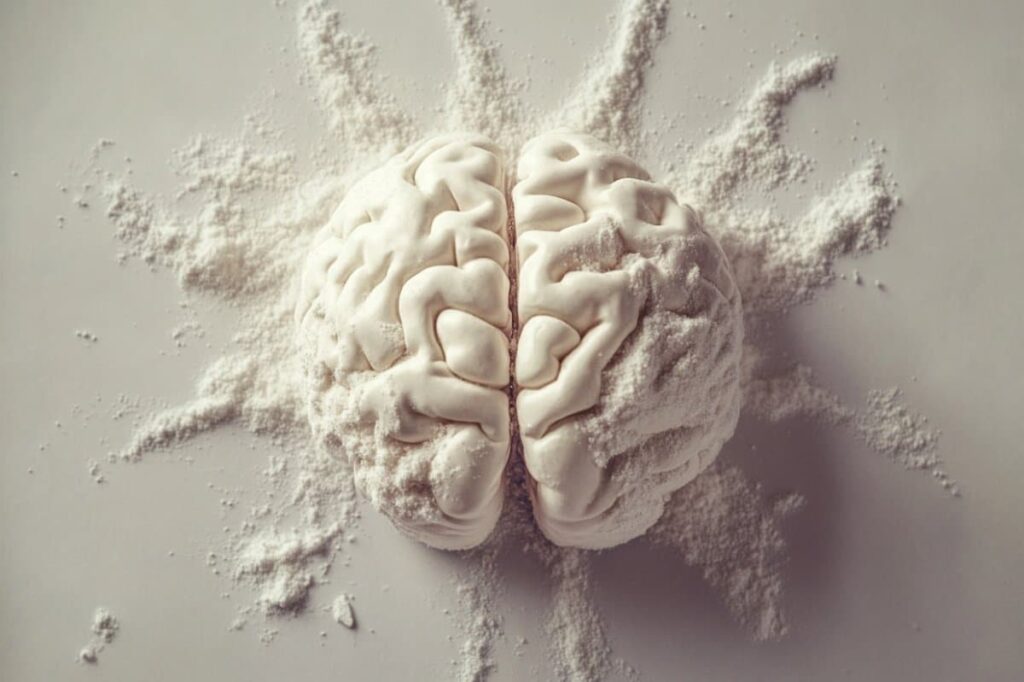
In a pioneering study, scientists have successfully engineered fruit flies to voluntarily consume cocaine, marking a significant advancement in addiction research. Conducted at the University of Utah, this research creates the first fly model for studying cocaine addiction, a disorder that affects approximately 1.5 million people in the United States. By disabling the flies’ bitter-sensing receptors, researchers were able to induce addictive behavior within just 16 hours of exposure.
This development could accelerate the discovery of treatments for cocaine use disorder, as fruit flies share many addiction-related genes with humans. The findings, published in the Journal of Neuroscience, represent a major step forward in understanding the genetic and neurological mechanisms behind addiction.
Creating a Fly Model of Cocaine Addiction
The research team, led by Adrian Rothenfluh, PhD, associate professor of psychiatry at the University of Utah, focused on genetically altering fruit flies to self-administer cocaine. Typically, flies avoid cocaine due to its bitter taste, but by blocking the flies’ bitter taste receptors, scientists enabled them to prefer cocaine-laced sugar water over plain sugar water.
Travis Philyaw, PhD, the first author of the study, explained that insects are naturally inclined to avoid plant toxins, including cocaine. “They have taste receptors on their ‘arms’—their tarsal segments—so they can put their hand in something before it goes in their mouth, and decide, ‘I’m not going to touch that,'” Philyaw noted.
Implications for Human Addiction Research
The ability to study addiction in fruit flies could significantly speed up the process of identifying relevant genes and developing therapies. “We can scale research so quickly in flies,” Philyaw said. “We can identify risk genes that might be difficult to uncover in more complex organisms, and then we pass that information to researchers who work with mammalian models.”
Rothenfluh emphasized the potential impact of this research, stating, “We can really start to understand the mechanisms of cocaine choice, and the more you understand about the mechanism, the more you have a chance to find a therapeutic that might act on that mechanism.”
Understanding the Bitter Barrier
One of the key challenges in creating a fly model for cocaine addiction was overcoming the flies’ natural aversion to the drug. The researchers discovered that cocaine strongly activates bitter-sensing taste receptors in the flies’ tarsal segments. By silencing these receptors, they were able to induce a preference for cocaine-laced solutions.
This preference developed rapidly, with flies showing a marked inclination for cocaine within just 16 hours of exposure. The dosage was crucial, as flies would only voluntarily consume cocaine at low concentrations.
From Flies to Human Therapeutics
The implications of this research extend beyond the laboratory. By understanding the genetic and neurological pathways involved in addiction, scientists can better target treatments for cocaine use disorder in humans. Rothenfluh highlighted the broader significance of basic research, stating, “Just trying to understand the simple little fly brain can give us insights that you cannot anticipate.”
“Basic science is important, and you never know what exciting things you might find that turn out to be impactful for understanding the human condition,” Rothenfluh said.
Future Directions and Funding
The study, titled “Bitter sensing protects Drosophila from developing experience-dependent cocaine consumption preference,” opens new avenues for testing human genetic variants associated with cocaine use disorder. The research was funded by the Huntsman Mental Health Institute, the University of Utah Molecular Medicine Program, and several grants from the National Institutes of Health.
As researchers continue to explore the genetic underpinnings of addiction, the fruit fly model offers a promising tool for accelerating the development of effective therapies. With the ability to rapidly screen hundreds of genes, scientists are hopeful that this research will lead to breakthroughs in understanding and treating cocaine use disorder.






